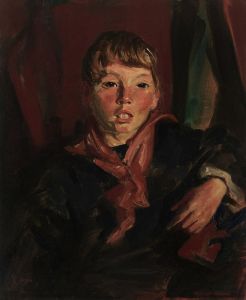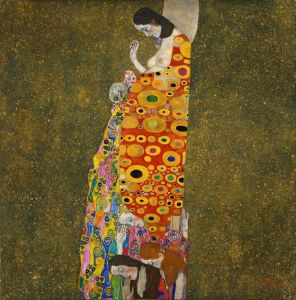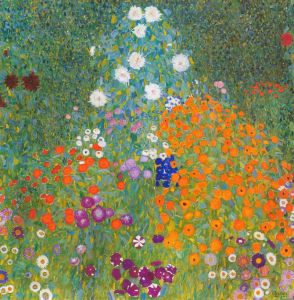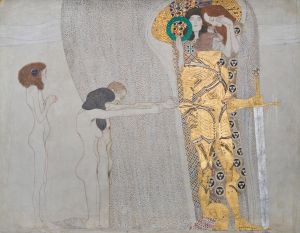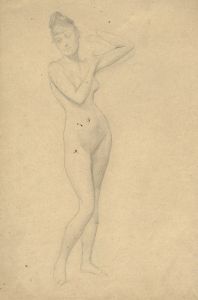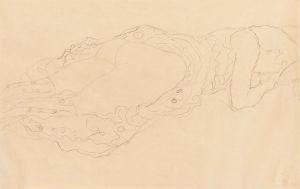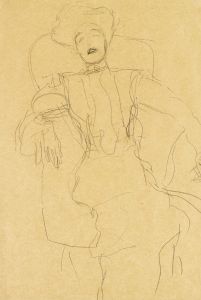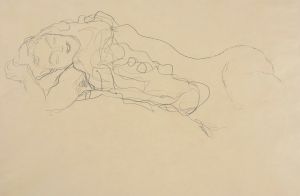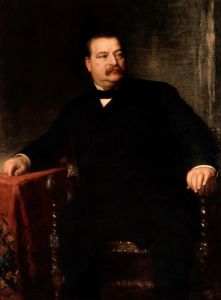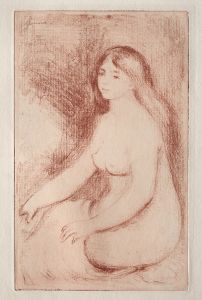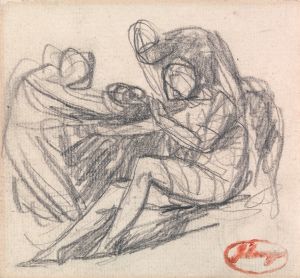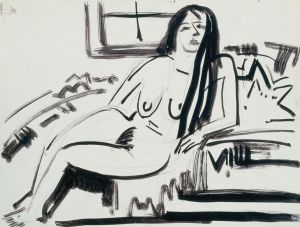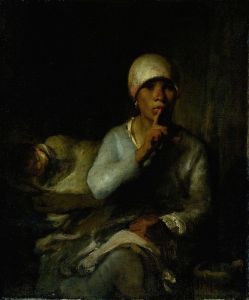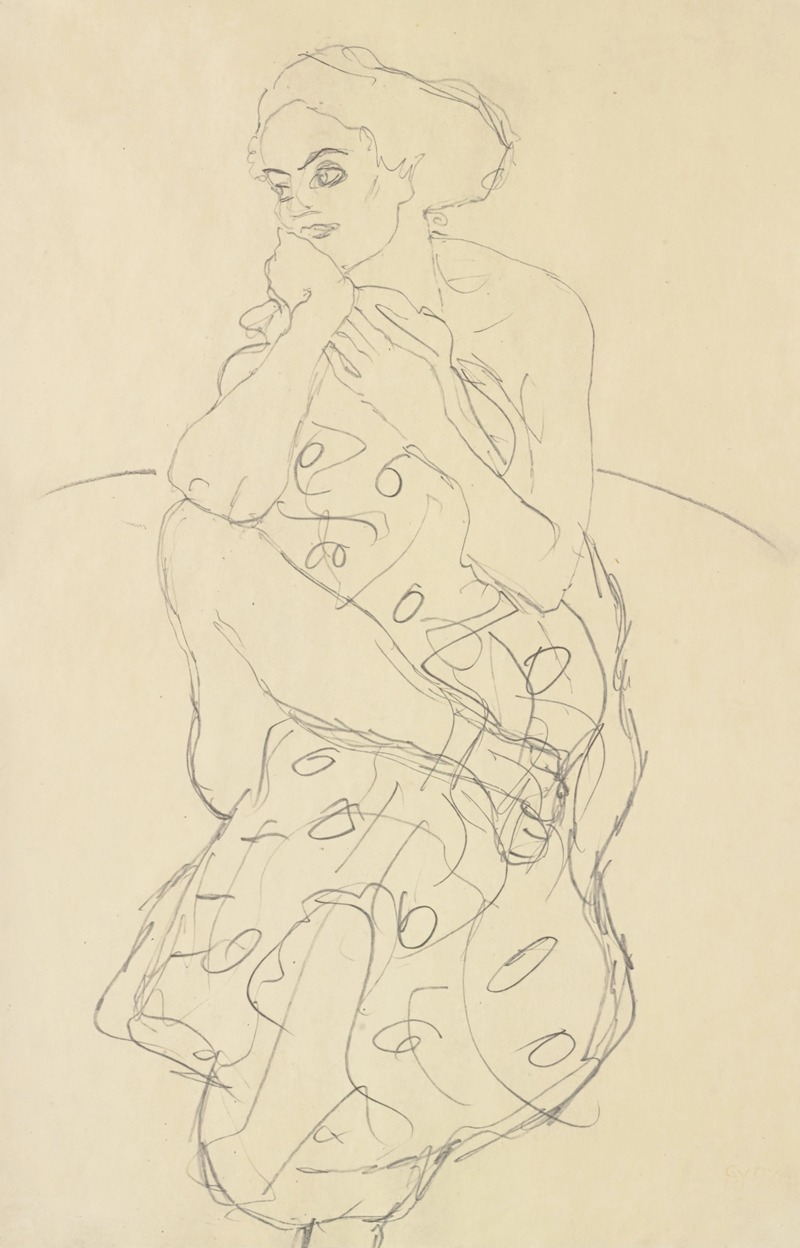
Sitzender Halbakt von vorne, den Kopf nach links gewendet
A hand-painted replica of Gustav Klimt’s masterpiece Sitzender Halbakt von vorne, den Kopf nach links gewendet, meticulously crafted by professional artists to capture the true essence of the original. Each piece is created with museum-quality canvas and rare mineral pigments, carefully painted by experienced artists with delicate brushstrokes and rich, layered colors to perfectly recreate the texture of the original artwork. Unlike machine-printed reproductions, this hand-painted version brings the painting to life, infused with the artist’s emotions and skill in every stroke. Whether for personal collection or home decoration, it instantly elevates the artistic atmosphere of any space.
Gustav Klimt, an Austrian symbolist painter, is renowned for his distinctive style and contribution to the Vienna Secession movement. One of his works, "Sitzender Halbakt von vorne, den Kopf nach links gewendet," exemplifies his mastery in capturing the human form with elegance and subtlety. This artwork, whose title translates to "Seated Half-Nude from the Front, Head Turned to the Left," is a testament to Klimt's fascination with the female body and his ability to portray it with both sensuality and respect.
Klimt's oeuvre is characterized by his exploration of the female form, often depicted in various states of undress. This particular piece, like many of his works, focuses on the intimate portrayal of a woman. The subject is seated, with her body partially draped, and her head is turned to the left, suggesting a moment of introspection or contemplation. The pose is relaxed yet poised, capturing a sense of natural grace.
Klimt's technique in this drawing is notable for its delicate line work and attention to detail. He often employed a combination of pencil and chalk to achieve a soft, nuanced effect, allowing him to convey the texture of skin and fabric with remarkable precision. This approach is evident in "Sitzender Halbakt von vorne," where the lines are both fluid and precise, creating a harmonious balance between form and space.
The context of Klimt's work is deeply rooted in the cultural and artistic milieu of late 19th and early 20th century Vienna. During this period, Vienna was a hub of intellectual and artistic activity, with the Vienna Secession movement challenging traditional artistic norms and embracing modernism. Klimt, as a leading figure in this movement, sought to break away from academic conventions and explore new forms of expression. His focus on the female form and the themes of beauty, eroticism, and the cycle of life were central to his artistic vision.
"Sitzender Halbakt von vorne" reflects Klimt's interest in these themes, as well as his ability to convey emotion and narrative through the human figure. The drawing does not merely depict a physical likeness but also invites the viewer to engage with the subject's inner world. This introspective quality is a hallmark of Klimt's work, inviting contemplation and interpretation.
Klimt's influence extends beyond his lifetime, as his work continues to be celebrated for its innovation and beauty. His drawings, including "Sitzender Halbakt von vorne," are studied for their technical mastery and their contribution to the evolution of modern art. Klimt's legacy is evident in the continued interest in his work, with exhibitions and retrospectives regularly showcasing his contributions to the art world.
In summary, "Sitzender Halbakt von vorne, den Kopf nach links gewendet" is a quintessential example of Gustav Klimt's exploration of the female form and his contribution to the Vienna Secession movement. Through his delicate line work and thoughtful composition, Klimt captures the essence of his subject, inviting viewers to appreciate both the aesthetic and emotional depth of his art.





